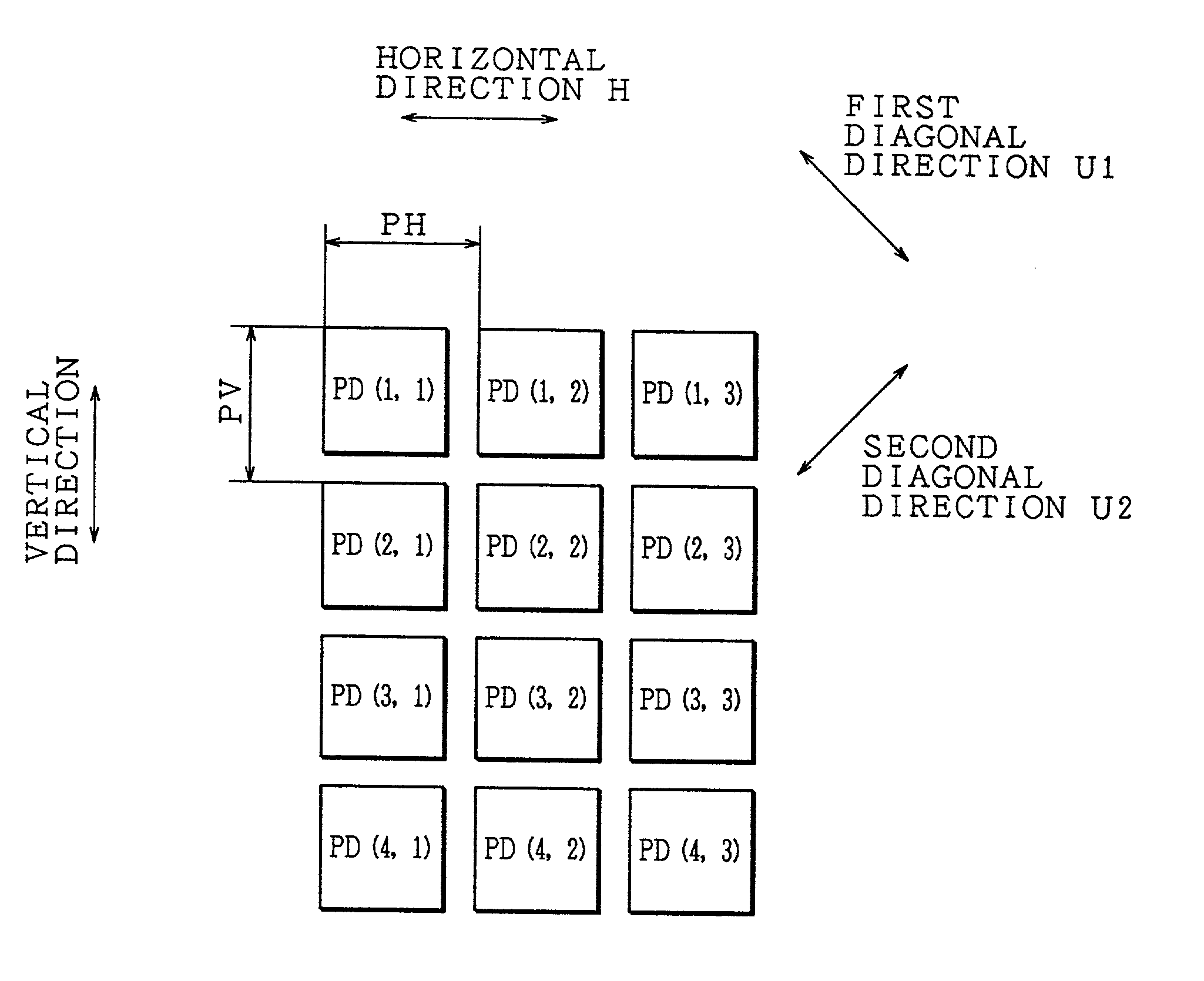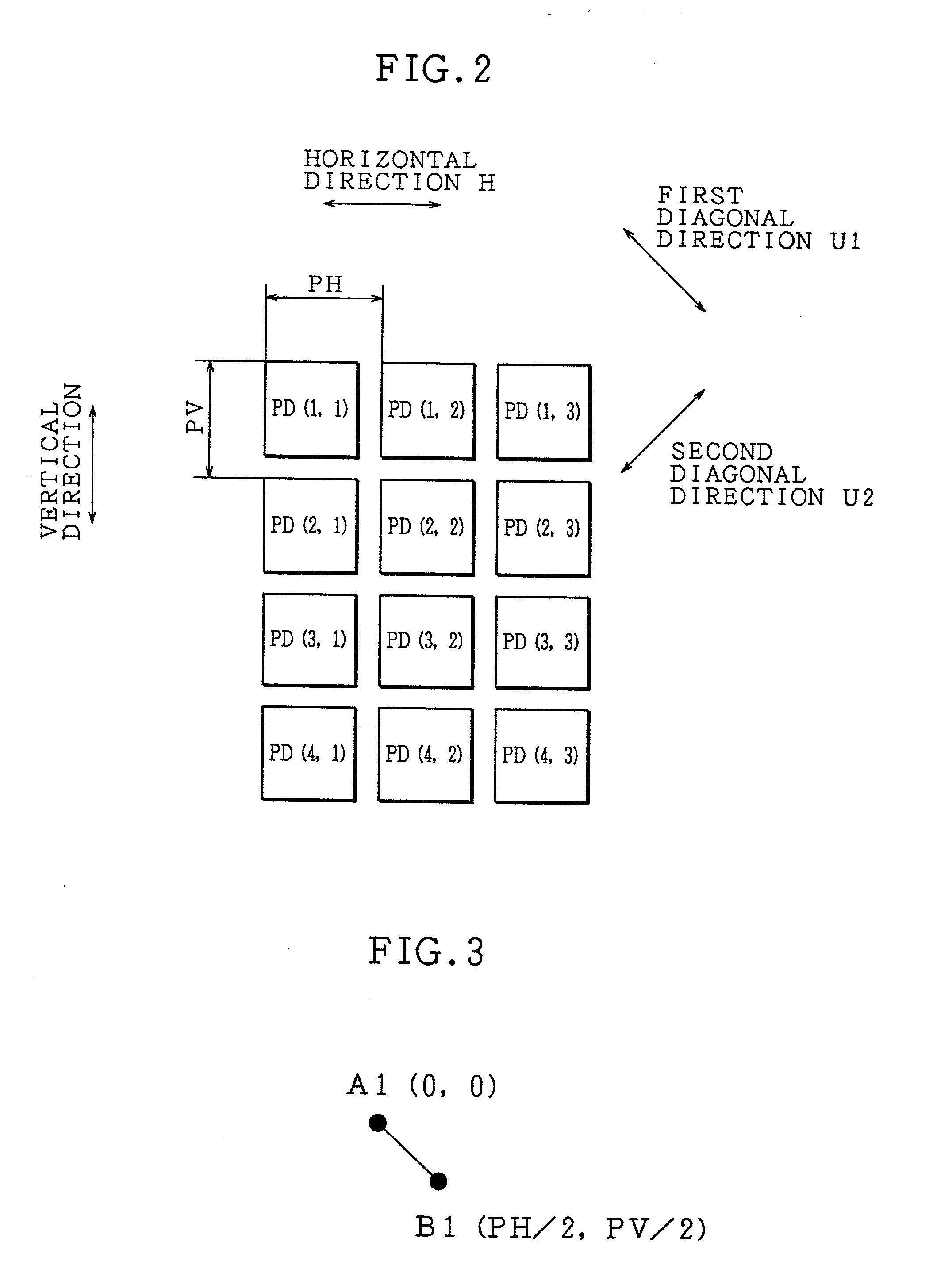Image pick-up apparatus
a technology of image pickup and output image, which is applied in the direction of instruments, television systems, color signal processing circuits, etc., can solve the problems of block borders appearing in the output image, affecting the quality of the output image, so as to prevent the degradation of the output image image quality
- Summary
- Abstract
- Description
- Claims
- Application Information
AI Technical Summary
Benefits of technology
Problems solved by technology
Method used
Image
Examples
embodiment 1
[Embodiment 1]
[0069] The following description will discuss one embodiment of the present invention.
[0070] As illustrated in FIG. 1, an image pick-up apparatus of the present embodiment is provided with an optical system 1, a charge-coupled device 2, an A / D converter (an Analog to Digital Converter) 3, an image memory 4, an LPF 5, a driving section 6, a synchronous-signal generating section 7, a memory control section 8, a signal-processing section 9 and a recording medium 10.
[0071] Imaging light from a subject is converged by a light-converging lens of the optical system 1, and then focused onto the image-forming surface of the charge-coupled device 2. A plurality of light-receiving regions PD are arranged in the matrix format on the image-forming surface of the charge-coupled device 2.
[0072] Besides the light-converging lens for converging imaging light, the optical system 1 has an image-shift mechanism. The image-shift mechanism is driven by the driving section 6 so that it allow...
embodiment 2
[Embodiment 2]
[0114] The following description will discuss another embodiment of the present invention. Here, the image pick-up apparatus of the present embodiment has a similar construction to the image pick-up apparatus of Embodiment 1; therefore, for convenience of explanation, those members that have the same functions and that are described in Embodiment 1 are indicated by the same reference numerals and the description thereof is omitted.
[0115] Different from the aforementioned Embodiment 1, the image pick-up apparatus of the present embodiment carries out the image shift in the horizontal direction H.
[0116] FIG. 6 is a drawing that indicates a positional relationship between the first and second image-forming positions with respect to imaging light. Based on the first image-forming position A2, the second image-forming position B2 is shifted from the first image-forming position A2 by half the length of the array period PH (PH / 2) in the horizontal direction H of the light-re...
embodiment 3
[Embodiment 3]
[0145] The following description will discuss another embodiment of the present invention. Here, the image pick-up apparatus of the present embodiment has a similar construction to the image pick-up apparatuses of Embodiments 1 and 2; therefore, for convenience of explanation, those members that have the same functions and that are described in Embodiments 1 and 2 are indicated by the same reference numerals and the description thereof is omitted.
[0146] Different from the aforementioned Embodiments 1 and 2, the image pick-up apparatus of the present embodiment carries out the image shift in the vertical direction V.
[0147] FIG. 9 is a drawing that indicates a positional relationship between the first and second image-forming positions with respect to imaging light. Based on the first image-forming position A3, the second image-forming position B3 is shifted from the first image-forming position A3 by half the length of the array period PV in the vertical direction V of ...
PUM
 Login to View More
Login to View More Abstract
Description
Claims
Application Information
 Login to View More
Login to View More - R&D
- Intellectual Property
- Life Sciences
- Materials
- Tech Scout
- Unparalleled Data Quality
- Higher Quality Content
- 60% Fewer Hallucinations
Browse by: Latest US Patents, China's latest patents, Technical Efficacy Thesaurus, Application Domain, Technology Topic, Popular Technical Reports.
© 2025 PatSnap. All rights reserved.Legal|Privacy policy|Modern Slavery Act Transparency Statement|Sitemap|About US| Contact US: help@patsnap.com



